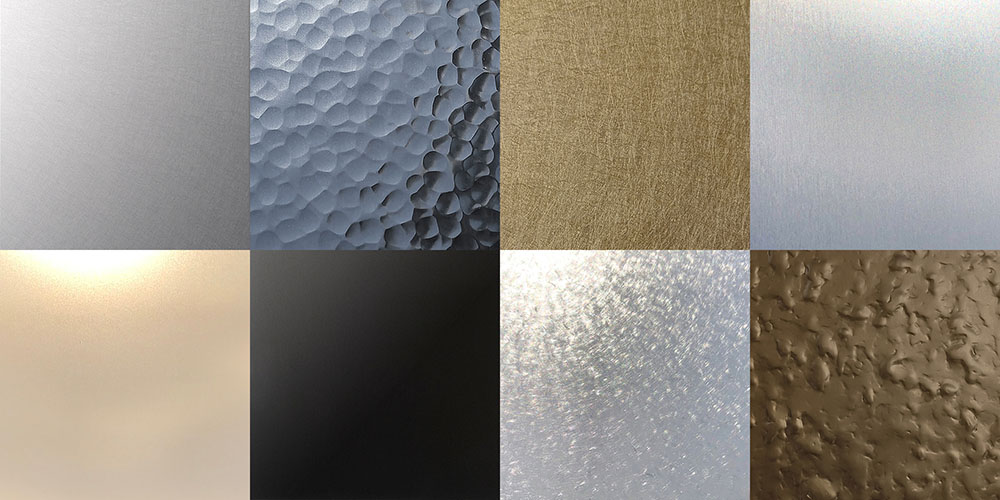Due to its light weight, corrosion resistance and easy processing, aluminum has been widely used in many industries such as construction, automobiles, and aviation. However, when using aluminum, surface treatment becomes a crucial link in order to further enhance its durability, oxidation resistance and aesthetic effect. This article will introduce several common aluminum surface treatment processes and their characteristics in detail to help you better choose the appropriate aluminum processing method.
1. Anodizing
Anodizing is one of the most common surface treatment processes for aluminum. An oxide film is formed on the surface of aluminum through an electrolytic process. This film not only enhances the corrosion resistance of aluminum, but also improves its wear resistance and hardness.
Advantages:
It provides surface effects of different colors and is widely used in decorative aluminum products.
It has enhanced oxidation resistance and corrosion resistance, and is suitable for aluminum exposed to the environment for a long time, such as outdoor buildings and automotive accessories.
Because the formed oxide layer has a certain hardness and wear resistance, anodized aluminum is more suitable for use in high-intensity environments.
Application areas:
Building curtain walls, electronic product housings, automotive parts, etc.
2. Powder coating
Powder coating is a process that sprays powdered paint onto the surface of aluminum through electrostatic adsorption, and then heats and cures it to form a smooth, uniform protective film. Compared with traditional liquid coatings, powder coating is environmentally friendly and pollution-free.
Advantages:
A wide range of color options are available, with surface effects ranging from high gloss to matte, and even textured treatments.
The coating is thick and has excellent corrosion and wear resistance, making it particularly suitable for outdoor facilities.
Powder coating does not require solvents, reduces the emission of volatile organic compounds (VOCs), and is more environmentally friendly.
Application areas:
Outdoor furniture, building structures, household appliance housings, etc.

3. Electrophoresis Coating
Electrophoresis coating is a technology that allows charged particles to be evenly coated on the surface of aluminum to form a coating under the action of an electric field. Electrophoresis coating is usually used in combination with anodizing to provide further protection and decorative effects.
Advantages:
The electrophoretic coating is thin and uniform, and can penetrate every corner of the aluminum, especially suitable for aluminum products with complex shapes.
Provides excellent corrosion resistance and surface smoothness, often used in high-demand decorative aluminum products.
Application areas:
High-end architectural aluminum profiles, decorative aluminum products, etc.
4. Polishing & Brushing
Polishing and brushing processes are mainly used to improve the finish of the aluminum surface and give it a unique metallic texture. After polishing, the aluminum surface is as smooth as a mirror, while brushing will form a uniform linear texture on the aluminum surface.
Advantages:
Polished aluminum has a highly reflective mirror effect and is suitable for high-end decoration.
Brushing gives aluminum a high-end texture and can cover up small flaws on the aluminum surface.
Application areas:
Home appliance panels, high-end decorations, electronic equipment housings, etc.
5. Chemical Oxidation
Chemical oxidation is a process that generates an oxide film through a chemical reaction, similar to anodizing, but the process is relatively simple and is mainly used for non-decorative purposes.
Advantages:
Provides a basic protective layer, low cost, and suitable for large-scale production.
It can effectively enhance the anti-oxidation ability of aluminum, but its protective effect is weaker than that of anodizing.
Application areas:
Industrial aluminum, automotive parts, etc.
Choosing a suitable aluminum surface treatment process can not only greatly increase the service life of aluminum, but also improve its appearance and function. According to the specific application scenario and product requirements, surface treatment can enhance the oxidation resistance, corrosion resistance and decorativeness of aluminum.